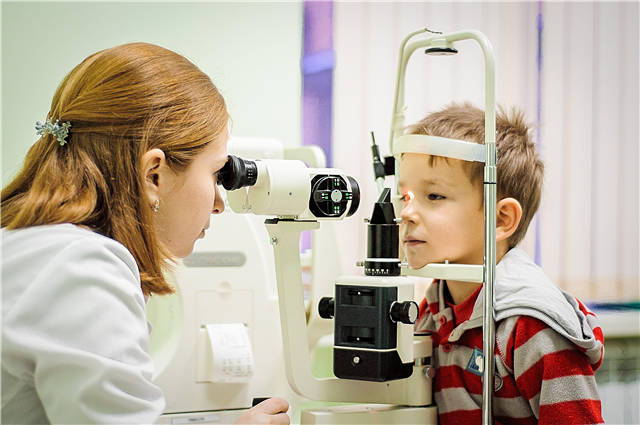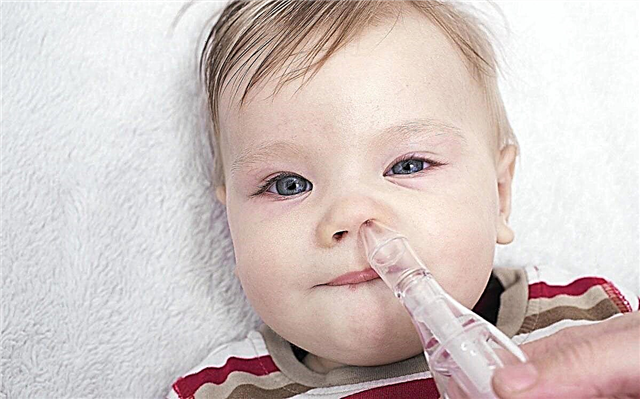
Antipyretic drugs are in the first-aid kit of every family in which a child has appeared, because high temperature is one of the frequent ailments in childhood. To fight fever, paracetamol preparations are considered the safest drugs.
Among them, Children's Panadol, which is also called Panadol Baby, is in high demand. One of its forms is a strawberry-flavored suspension. When is it prescribed to children, how does it act on the child's body, in what dose is it used and does it have analogues?

Release form
Children's Panadol in the form of a suspension looks like a viscous syrupy liquid, so this medicine is often called a syrup. The solution has a pink hue and a strawberry aroma, and the taste is sweet.
The volume of the medication in one glass bottle is 100 ml or 300 ml. The bottle is sold with a plastic syringe and instructions.

Composition
The main component of the drug that provides Children's Panadol with its therapeutic effect is paracetamol. Its amount in 5 milliliters of solution is 120 mg.
For a liquid and viscous consistency, as well as preventing spoilage, the medicine contains parahydroxybenzoic acid esters, sorbitol, xanthan gum, water, citric and malic acid.
The sweet taste of the medicine is provided by maltitol, the color is provided by the dye azorubin, and the smell is provided by strawberry flavor. There is no alcohol or sugar in such a solution.

Operating principle
Children's Panadol has an antipyretic effect, since its active ingredient is able to block the enzyme cyclooxygenase in the tissues of the nervous system. Thanks to this, the medicine acts on the thermoregulatory center, and the body temperature begins to drop.
The same mechanism of action provides an analgesic effect (paracetamol also affects the center of pain), but the suspension has practically no anti-inflammatory effect... This medication does not affect the formation of prostaglandins in peripheral tissues, therefore Panadol also does not have a damaging effect on the gastrointestinal tract.
The absorption of paracetamol from the suspension occurs very quickly. Already in 30-60 minutes after ingestion, the peak of this substance in plasma becomes maximum. The therapeutic effect is observed 15-20 minutes after the patient has swallowed the syrup, and it lasts about 4 hours.
The metabolism of Panadol's ingredients takes place in the liver tissues, and the excretion of the drug occurs almost completely in the urine.

Indications
Most often, Panadol Baby is given to children with fever, which can be triggered by:
- flu;
- chickenpox;
- scarlet fever;
- measles;
- ARVI;
- rubella;
- intestinal infection;
- mumps;
- vaccination and other reasons.

Since the drug also has an analgesic effect, such Panadol can also be used for pain, for example:
- due to teething;
- with otitis media;
- with throat diseases;
- with bruises, fractures and other injuries.
From what age is it allowed to take?
Baby Panadol suspension is usually not given to infants younger than 3 months old. According to the instructions, such a drug is used in the treatment of children whose age ranges from three months to 12 years.
The syrup is contraindicated in newborns., but it is permissible to give it to babies of the second or third month of life once in order to eliminate the fever caused by vaccination.
If after such a single use the temperature does not drop, you cannot give Panadol again, but you should consult a doctor.
Do not use liquid medicine in adolescence. If the child is over 12 years old, it is more advisable for him to give a tablet form (Panadol for adults), since adolescents require a higher dosage, which will make the volume of the suspension quite large per dose.

Contraindications
The suspension is not prescribed if the child has:
- revealed intolerance to paracetamol or any of the auxiliary components of the solution;
- there are violations in the work of the kidneys;
- have liver problems;
- found a genetically determined absence of glucose-6 phosphate dehydrogenase or fructose intolerance;
- have severe blood diseases such as anemia or thrombocytopenia.

Side effects
In some children, taking Panadol causes allergies, such as itchy skin or rashes. In rare cases, an immediate reaction to the suspension occurs in the form of urticaria, angioedema or even anaphylaxis. Other side effects include:
- With prolonged use, the drug can change the blood picture, reducing the number of its cellular elements.
- In children with hypersensitivity to NSAIDs, the suspension rarely provokes bronchospasm.
- Occasionally, treatment with Panadol impairs liver function or adversely affects the digestive tract (provoking pain, nausea and other symptoms).

Instructions for use and dosage
Children's Panadol in suspension is taken orally, dispensing the medicine with a measuring syringe enclosed in a box. Before taking the medicine, it is imperative to shake well so that all its components are evenly distributed in the liquid.
The determination of the dosage of the drug for small patients is influenced by the age of the child and his weight. Recommended numbers for babies of different ages and weights can be seen in the table and on the Panadol box, in the annotation attached to the bottle. For example, if a child is 6 months old and his body weight is 8 kg, he is given 5 ml of suspension per dose, and for a small 4-year-old patient weighing 16 kg, a single dosage of the drug will be 10 ml.
The maximum allowable dose is calculated by weight - it is no more than 15 mg per 1 kg per dose and no more than 60 mg per 1 kg per day.
The recommended frequency of taking the suspension is 3-4 times a day. In this case, liquid Panadol is given at intervals from 4 to 6 hours, but no more than four times during the day. Without a pediatrician's prescription, the drug can be taken for only 3 days.


Overdose
Parents should accurately measure the suspension and not exceed its single dosage, and also do not give the drug to children more often than every 4 hours and more than four times a day. An overdose of Panadol is dangerous due to the negative effects of the medication on the liver, digestive system, kidney function and metabolic processes. In severe cases, it can lead to bleeding, encephalopathy and other adverse conditions.
If the dose is exceeded, the patient should be immediately shown to the doctor, even if the child's well-being is normal. If after an overdose no more than an hour has passed, it is important to rinse the baby's stomach and give one of the enterosorbents. If the child is in serious condition, they are immediately hospitalized and prescribed acetylcysteine, methionine and other necessary drugs.

Compatibility with other medicines
Before giving Children's Panadol in case of fever or pain, it is important to clarify whether the child is taking any other medicines, because paracetamol preparations should not be combined with many other medicines. A complete list is available in the suspension annotation.
Terms of sale
Panadol Baby suspension is sold without a prescription, so it can be freely purchased at most pharmacies. The average price of 100 ml of the drug is 80-90 rubles.
Storage conditions
The suspension has a shelf life of 3 years. Until its completion, the medication should be stored in a place hidden from direct sunlight. At the same time, it is impossible to freeze the bottle or heat it above +30 degrees. In addition, it is important that the syrup cannot be reached by a small child.


Reviews
There are predominantly positive reviews about the use of Children's Panadol in children with fever or pain. In them, the suspension is called an effective medicine, praised for its convenient shape, affordable cost, ease of dosage and pleasant taste.
Mothers like that this drug is not only effective, but also safe, so it can be given to babies and taken during pregnancy. Only in rare cases does Panadol Baby provoke allergies and other negative symptoms.
Most children take this syrup without problems and do not develop side effects.

The disadvantages of the drug include it short healing effect, which is why many parents prefer ibuprofen drugs (the duration of their action is up to 8 hours). Also, some mothers do not like the composition of the suspension, because it includes both dye and flavor.
To avoid these chemicals entering the child's body, they choose Children's Panadol in candles, which is especially true for infants or children with allergies.

Analogs
Another liquid medicine based on paracetamol can become a replacement for Panadol Baby suspension, for example:
- Calpol. This strawberry suspension also contains 120 mg of paracetamol per 5 milliliters and is sold in 70 and 100 ml bottles. It is prescribed for children between the ages of 3 months and 6 years.
- Efferalgan. This 3% caramel vanilla syrup contains 30 mg of paracetamol in each milliliter. The drug is produced in bottles of 90 ml and supplemented with a measuring spoon. It is prescribed for children from 3 months to 12 years old.
- Paracetamol. Such a drug with an orange or strawberry flavor is produced both in suspension (it contains 120 mg of active substance in 5 ml) and in syrup (the dosage of paracetamol in this form is 125 mg / 5 ml). The medication is prescribed for babies over three months old, and at the age of 1-3 months is given under the supervision of a doctor.
In addition, instead of Panadol, the doctor may recommend a suspension, the action of which is provided by ibuprofen. This drug can be Nurofen or Ibuprofen. Each 5 ml of this suspension contains 100 mg of ibuprofen. The medication is prescribed for children with pain or fever from the age of three months.



